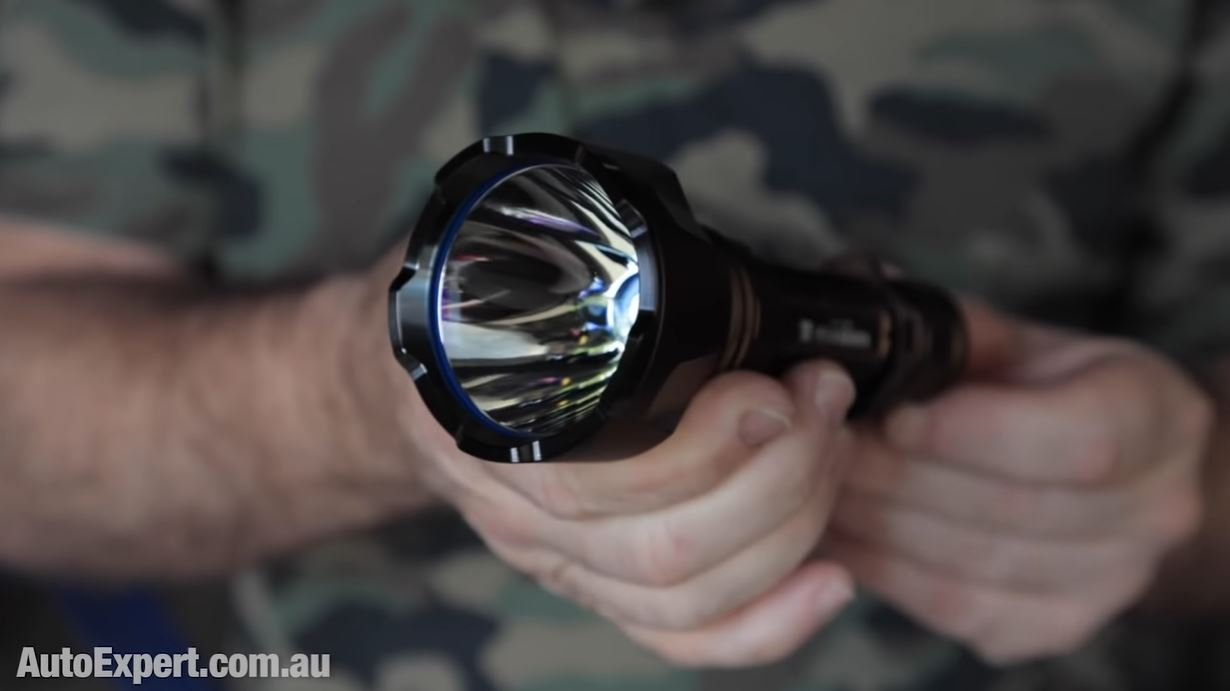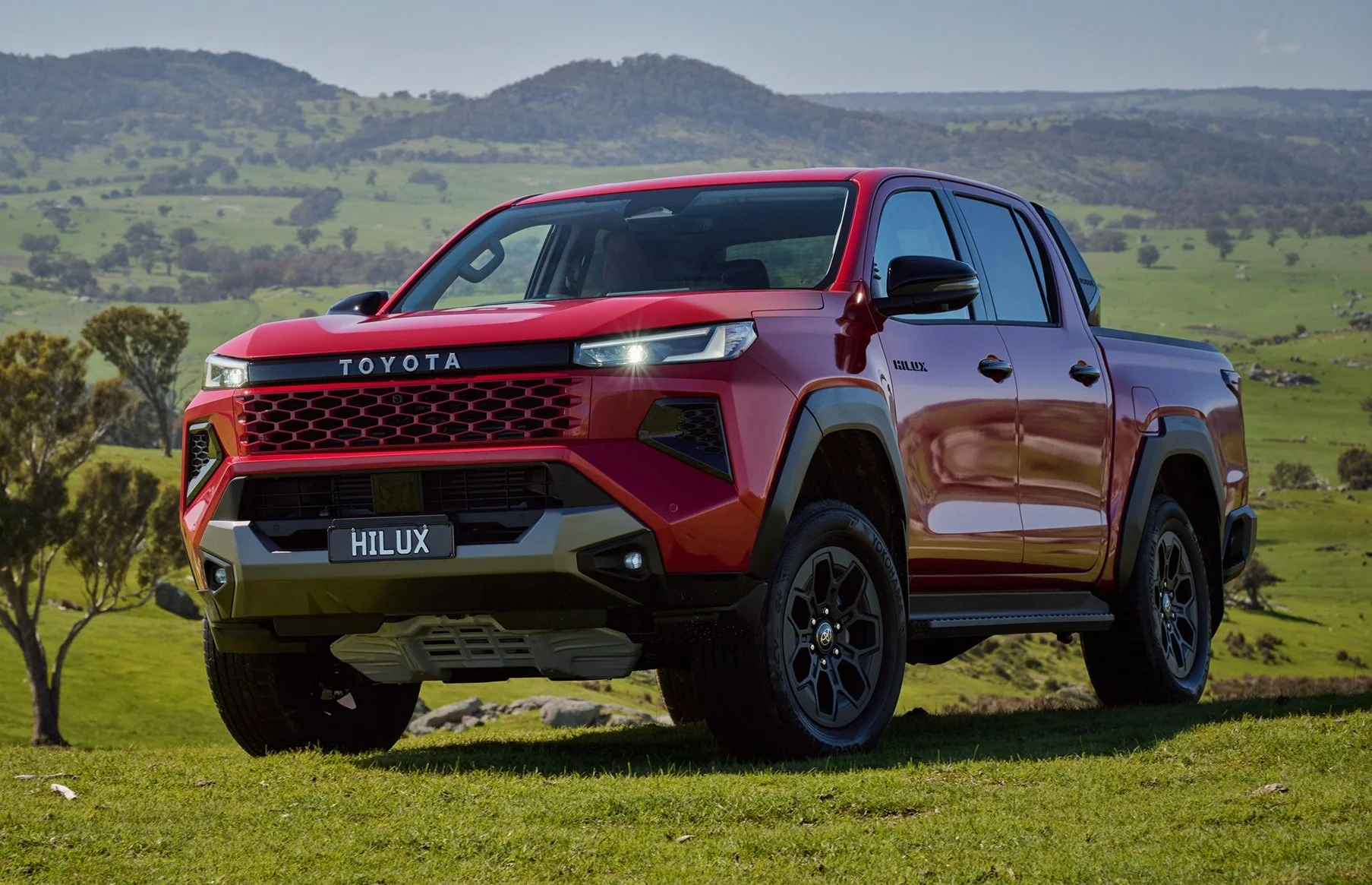The truth about "fossil-free" hydrogen steel for making cars and trucks: It's a pipedream
Yet another disgraceful transport industry PR stunt uses greenwashed ‘hydrogen steel’ to sell the reputation of Volvo trucks. It sounds great, but here’s the problem with pipedreams…
In global greenwashing news, the trucking industry wants you to think it is making trucks using that misunderstood super miracle molecule called hydrogen.
Fossil fuel - which is essentially just burning dirt to make energy - has liberated our species, giving us medicine, technology, an abundance of food, and unimaginably awesome structural capability. I mean, just Google the Burj Khalifa.
Hydrogen is going to play a significant part in humanity’s transition away from fossil fuels. In fact, it already is, as Hyundai has been trying to demonstrate with its XCIENT fuel cell truck and Nexo fuel cell SUV record.
With a combination of wind, solar, batteries, hydrogen fuel cells, tidal and - like it or not - some remaining element of oil, gas and coal, humans have an insatiable demand for energy. Not just for turning on lights or powering your car.
We use energy to make things. Everything, actually. Steel, glass, rubber, phones and laptops, food, clean water, roads, buildings, clothing, medicine - it all requires energy to make.
That includes transport, obviously. Making a single vehicle requires huge amounts of energy, and the bigger the vehicle, the more energy required to produce it. Not just to mine the raw materials, but to transport those materials, to make the raw steel, aluminium, copper, glass, rubber, etc., and then turning all that stuff into a great big truck capable of pulling even more stuff which also requires energy to make and move.
Finding a cleaner way to make cars and trucks is an important step to cleaning up the transport sector - but manufacturers letting the marketing department dictate the scientific endeavour is not helpful. In fact, it’s downright deceptive and only prolongs the problems ultimately facing humanity.
So let’s discuss why Volvo Trucks’ latest hydrogen-steel production press release is a bunch of unadulterated, unmitigated industrial-grade bullshit. Just like so-called ‘clean coal’, carbon capture and that deplorable ‘blue hydrogen’ idea >>.
Yep, those crazy Swedes have been greenwashing themselves like 15-year-olds. Starting with:
Volvo Trucks, getting very enthusiastic about their apparently revolutionary new steel manufacturing technique. Except, this is actually ‘hydrogen steel green wank #2’ from them, on this issue of alleged fossil-free steel.
The first green wank was seven-and-a-half long months ago, with the ‘World’s first hydrogen steel vehicle’. Although, technically not a truck. Now, ‘World’s first hydrogen steel truck’. What incredible ‘world firsts’ will they come up with next? Bolts, wheelnuts, tailshafts, world’s first green stee; ball bearings. Whoop-di-doo.
This chronic Volvo Truck green steel marketing is of course because a Swedish company you’ve never heard of, called SSAB, sucked quite heavily on the Swedish Government’s funding levers, recently, to develop a coal-free steel ‘cottage industry’ process. Suddenly, a Swedish company you have heard of, which also pulls robustly on the Swedish Government’s lever is the ideal delivery system for this allegedly green bullshit (as defined by Prof. Harry G Frankfurt).
Jessica Sandstrom is a Volvo Trucks bigwig, who in my view, is liberally trowelling it on with an MBA-like proficiency for marketing bullshit. Personal opinion.
As corporate/governmental three-ways go - this one was a pretty spectacular PR stunt. Journalists just lap up this ‘Volvo fossil-free steel’ crap - it’s everywhere on Google. Take these two keyboard warriors working for Forbes - David Vetter and Scott Carpenter. Well done, not asking a single obvious, glaring question. Regurgitate those press releases, gents. Apparently that’s what journalism is now.
But what a pity the whole thing is a sideshow that does not scale, cannot scale, and actually serves to sweep under the rug the greenest possible steel production initiatives, which we could implement right now, if saving the planet were actually important, in comparison to, you know, just producing more bullshit.
And that is, of course, what is truly disgraceful about this. Shiny new toy, dumb media - the result of which is: Actionable CO2 reduction gets thrown under the bus. Again.
My AutoExpert AFFORDABLE ROADSIDE ASSISTANCE PACKAGE
If you’re sick of paying through the neck for roadside assistance I’ve teamed up with 24/7 to offer AutoExpert readers nationwide roadside assistance from just $69 annually, plus there’s NO JOINING FEE
Full details here >>
AutoExpert DISCOUNT OLIGHT TORCHES
These flashlights are awesome. I carry the Olight Warrior Mini 2 every day - it’s tiny, robust, and super useful in the field or in the workshop. Olight is a terrific supporter of AutoExpert.
Use the code AEJC to get a 12% discount >>
A Quick Recipe for Making Steel
This is a brief technical sideshow. Iron ore, which Australia has by the quintillion metric shit-tonne, in the Pilbara, is basically concentrated rust. Iron oxide. There’s a couple of main flavours, but it’s basically rust.
Rust is iron plus oxygen, chemically ‘as one’. So, you dig it up. Then you heat it up and you make these pellets of concentrated iron ore. That’s step one. It’s just a way of controlling the input side of the steelworks.
Then you super-heat it up to about 1600 or 1700 degrees C - which is about 3000 F - with coke (an enriched, more energy dense form of coal with fewer impurities). Then the magic happens, where the oxygen in the glorified rust buggers off and hangs out with the carbon in the pulverised coal. It’s beautiful, and dirty.
Together, they shoot off into the sky as CO2, leaving you with a pool of hot, steamy, liquid iron, which is almost, but not quite, steel, and which you further process into steel by reducing the carbon. This ‘decarburisation’ is done by blowing oxygen up its arse - which is quite entertaining, the first time. More CO2 is emitted, of course.
Then, you finish the whole thing off with a nice, warm crucible, typically, by adding various alloys depending on the specific type of steel you happen to be making that day. It could be 4140 chrome manganese tool steel, or 1045 medium tensile, or even a zesty 12L14 free-machining steel - whatever.
Rather a lot of CO2 is produced when you make steel. About 1.9 tonnes of CO2 for every tonne of steel. So, reduction or elimination is worthwhile - provided it can be implemented. Not this Swedish ‘pie in the sky’ garbage.
That’s conventional steelmaking. Almost all steel made globally is made in this way. Nearly two billion metric tonnes annually, and rapidly increasing. So, that’s just under four billion metric tonnes of CO2. Just over half of all steel is made in China, then the EU, India, Japan, USA, Russia, South Korea and Turkey - the top seven global steelmakers.
We are, of course, nowhere on that list, despite drowning in the raw materials, because we are a nation of fuckwits, politically. I’m hopeful this might change over geologic time (or the next three years; wishful thinking).
So, what the crazy Swedes have done is develop an alternative process. Where the first furnace - which pelletises the iron ore - is powered by bio oil. FFS.
Pro Tip: You greenwashing, government-funded marketing geniuses: Bio oil is fine for your insignificant little pilot plant. But you can’t roll that out on a global scale. This is just awful Swedish greenwashing. It’s cynical. So what? You used a little bit of plant oil instead of coal.
There is simply insufficient canola in the world, to roll this out. And there’s the whole ‘fuel versus food’ debate to be had on that one. So, bio oil: good for disingenuous greenwashing and press releases in front of a bunch of dumb journalists, but it’s not going to scale.
But that’s not going to scale either, is it? See, according to ‘facts’ (which are often so inconvenient) about 95 per cent of global hydrogen production is not green.That’s right, 95 per cent - not green. Hydrogen gas is cheaply made by stripping hydrogen atoms away from basic hydrocarbons (mostly methane) at high temperature, and throwing immense volumes of CO2 into the sky.
More Bad News for Volvo Truck Marketing: You Need to do your Homework
Next, in the Swedish process, which is called ‘Hybrit’, is the use of hydrogen. Clean, green hydrogen, made by electrolysis, from renewable electricity, stored under immense pressure (250 atmospheres) in a convenient rock chamber, deep underground.
See, instead of coke and heat to convert the oxygen in iron ore into CO2 and bugger that off into the sky, to the detriment of the planet, government-funded Swedish clever-clogs inflict hydrogen on the iron ore, and the oxygen in the glorified rust combines with hydrogen to form water, which is much friendlier.
So, that’s quite clever - well done - provided you make the hydrogen by electrolysing water using photovoltaic or hydro electricity, or wind, or similar. Which they do at this Volvo Truck pilot plant. It’s all green. Hooray.
But that’s not going to scale either, is it? See, according to ‘facts’ (which are often so inconvenient) about 95 per cent of global hydrogen production is not green.That’s right, 95 per cent - not green. Hydrogen gas is cheaply made by stripping hydrogen atoms away from basic hydrocarbons (mostly methane) at high temperature, and throwing immense volumes of CO2 into the sky.
You don’t have to like this; it’s still a fact. About 87 million tonnes of hydrogen gas annually is made this way, from hydrocarbons. And if you use methane, that’s about one billion tonnes of CO2 - not including the CO2 from heating the stuff up, to make the reactions happen (and these occur at 1100 degrees C and 360 degrees - it’s a two-step process - involving quite a lot of additional CO2 for the heat). So there’s that.
Even if you did roll this out, using hydrogen from electrolysed water, currently two-thirds of all electricity on the planet is generated from fossil fuel. So this is currently not scalable.
Essentially, ‘all’ we have to do to de-carbonise global steel production is: Shut down untold existing blast furnaces around the world, roll out the new process, change the way we produce hydrogen, and make sure the whole thing never gets a single watt of fossil-fuelled electricity.
And figure out how to pelletize the iron ore without planting rapeseed on every square inch of arable land on earth. Perhaps we could just knock down the remainder of the Amazon rainforest for that. Or plant it where the Greenland ice shelf used to be.
I’m not saying this is not a technically interesting development. It is. But this disgraceful greenwashing has to stop. They’re running with it like. ‘Problem solved. Steel is green now.’
This is a goal that cannot be kicked worldwide for 50 years. And we don’t have 50 years. We need to act now. This development does nothing for the climate today. And that’s what’s wrong with a media obsessed with publishing this BS. It’s like, ‘Here’s your talking points, please love us. Now go off and write a nice story that makes us look really good.’
So, what might we do today? Easy: we can increase the use of recycled steel. See, recycled steel has no deep desire (or need) to mate with carbon at 1600 degrees C, like iron ore does. You just melt it, and go again. You can do that in an electric arc furnace. And if the electrons are motivated by the wind, or the sun, or all of the available renewable energy sources we have at our disposal - more of which needs to be built as quickly as possible using the fossil fuels we’re already consuming right now.
Steel recycling is already pretty high, at about 37 per cent. But there is scope for improvement, and every kilo you add to that tally is a kilo you don’t have to make in a blast furnace, with coke, from scratch. So, incentives for recycled steel - that’d kick a bigger goal on climate today, than this greenwashing shit. Because recycling steel does scale.
It’s not the kind of thing that would motivate Jessica Sandstrom from Volvo Trucks to get excited about in the PR department, I’m pretty sure, but it would constitute more effective climate action this year - right now - not in half a century at best, maybe.
Minimum recycled material content for carmakers - mandates orbiting that would be a massive achievement. Anyone else who paid attention at university would agree.
REAL SOLUTIONS
Here’s a bitter pill for the automotive industry: A kilo of steel you don’t use is untold kilos of emissions you don’t make. So, how about we concentrate on two more things:
First: Carmakers who want to be green have to increase the service life of their vehicles. That’s one of the greenest possible things - but it is completely counterproductive to carmakers because they’re in the ‘throwaway vehicle’ business. It suits carmakers for cars to be disposable. And that has to change.
Would it not be awesome if you could update your 2010 car to substantially 2022 technology with a factory-approved upgrade/refurb pack? This would keep a great deal of those fundamental embodied emissions turning and burning for longer. Very good for the planet. Not so hot for the sale of new cars, however…
The 300,000-kilometre promise. I’m hearing crickets. You cannot be green if all you do is sell as many new vehicles as you can, as quickly as possible.
Second: Automotive manufacturers need to reduce the weight. In practice, the car industry does the exact opposite. There’s a vehicular obesity epidemic happening right now. They’ll bullshit you about the use of ultra-high tensile steel, and its weight-saving potential. Gigapascal steel. Plus other alleged weight-saving technology.
But in practice, cars just keep getting heavier. A top-spec Toyota Corolla hatch from 2002 (two decades ago) weighed 1100 kilos. Same thing today: 1390 kilos. That’s the obesity epidemic right there - 26 per cent heavier in 20 years. (It’s even worse if you use the hybrid, which I did not - preferring ‘apples for apples’.)
Those disingenuous pricks have not even managed to use all the alleged weight-saving tech just to keep the weight constant over time. I’m not cherry picking, either: Subaru Forester is also up more than 200 kilos in the same period, and Hyundai Santa Fe is up about 300 kilos. These are not outliers. It’s typical. This is the opposite of green.
A top spec RAV4 is one family away from weighing two tonnes - a mid-size SUV.
More mass equals more impact on the climate. More energy to produce, and more energy to move from A to B. It does not get any simpler than that. You can’t save the planet in a seven-seat hybrid SUV made of allegedly ‘fossil-free’ steel, designed to be scrapped in 160,000 kays - the concept that you might, is clinically insane.
Maybe that’s why the car industry loves it. God did put us here to make bullshit. There’s no other explanation as to why humanity is so impossibly excellent at this one thing. (I used to think we were put here to fill the oceans up with plastic - but we’re merely ‘proficient’ at that.)
In practice, the actionable steps that would make a difference today are getting eclipsed by this indefensible greenwashing, corporate agenda-serving bullshit, and on that front I’d suggest the Swedish government, SSAB and Volvo Trucks should hang their heads in shame.



























The MG ZS is a small SUV that offers such strong value to most buyers that it should be on your shortlist be default, even when shopping for a used car. But given that no car is perfect, the price could easily distract from its drawbacks.